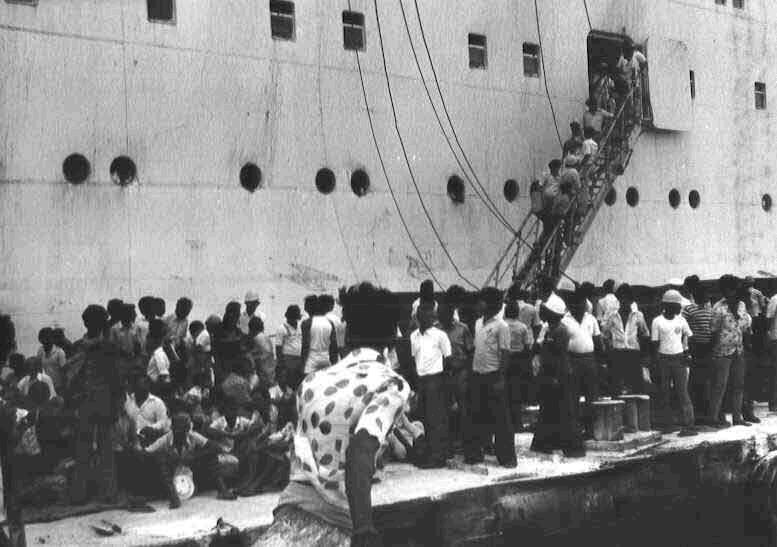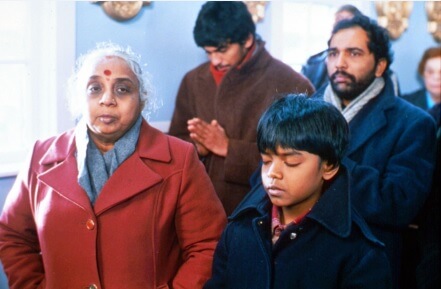The refugees, much like the ocean, come in waves. Since the invention of geographic borders, people have continuously stretched across shorelines in attempt to escape an imminent death. Their movement, led by the unforgiving sea, is entrenched in human history.
This year the term refugee precedes the word crisis as millions of Syrians flee from burning homes to a foreign elsewhere. The refugee is a subject of heated debate, one coded with xenophobic undertones and wrongful calculations aimed to separate the safe from the unsafe. Politicians dance between increased border security and pledges of safety prompted by gruesome photos of infant corpses.
While the world looks on in horror, my parents look back. For Eelam Tamils and many other ethnic groups, there is nothing current about the plight of a refugee – it is a lived reality. The war they escaped serves as the foundation for their very existence.
The Sri Lankan civil war, lasting from 1983 to 2009, was an armed conflict between the country’s military and Tamil rebel group, the Liberation Tigers of Tamil Eelam (LTTE), which aimed to establish an independent state for the ethnic Tamil minority in the north and east regions of the tear-shaped island. Often described as a quiet genocide, the details of the war are suffocated by extreme government censorship laws.
The origins of ethnic tension between majority Sinhala and minority Tamil populations, however, can be traced back to colonial rule during which divisive parliamentary structures were implemented. At the end of British rule in 1948, the Sinhala Only Act was passed in 1956 that deemed Sinhala the sole official language of the country. Tamils were left severely disadvantaged by this policy and continued to face systemic discrimination by the Sinhala state, contributing to heightened ethnic tension and the emergence of armed Tamil resistance groups.
Official war broke out in 1983, after government militia responded to the killing of 13 Sri Lankan soldiers by LTTE forces, with the brutal violence of the 1983 riots – otherwise known as Black July. This anti-Tamil pogrom killed between 400 and 3000 people, destroyed 8000 homes and 5000 shops. It marked a point at which death grazed the tips of Tamil heels as dismembered corpses regularly burned to ashes.
During this period, massive groups of Tamil refugees escaped from home and fled to unfamiliar lands across the world. It is why in 2016 large communities of Eelam Tamil populations can be pinpointed around the globe. It is why I have cousins in England and Australia. We are all descendants of war.

Tamil refugees boarding a ship in Jaffna – August 1983
The generational divide in Eelam Tamils is marked by vastly different historical contexts that bleed into each other, offering uniquely fragmented identities influenced by the war. While our grandparents saw the country shift from autonomous to colonial rule, our parents experienced its post-colonial restructuring and subsequent Sinhala nationalism. We as a diaspora watched the curtain fall on a decades-long conflict we could never fully understand. And although the impact of the war varies drastically between us, what remains consistent is the recognition of a profound loss and the silent mourning of a forgotten identity.
The expression “back home”, native to immigrant tongues, takes on a different meaning for Eelam Tamils and other exiled populations. “Back home” for my parents is an allusion to a place that lays buried beneath the aftermath of a violent war. They float between a concept of what was, what could have been, and what has become of a former self.
For many Eelam Tamil refugees, the trauma of having witnessed the war and fled its terror remains unprocessed in order to rapidly integrate into a new culture that demands their assimilation. Their pain rests undisturbed, suppressed into the subconscious and inherited over generations. It is therefore unsurprising that issues such as undiagnosed mental illness, alcoholism, and gang violence plague our community.
For us to heal from these internalized wounds, it is essential that we make sense of a stateless identity by understanding our history of exile and the structures that were complicit in our displacement. In Pablo Neruda’s poem “Forget About Me”, the first stanza ends with:
let us look for what the sea undid
insistently, carelessly,
what it broke up and abandoned,
and left behind for us
As children of refugees, we are capable of uncovering the remnants of the war and will more than likely find placating truths about ourselves in them.
Related articles:
Tamil Journeys ’86: Marking the 30th Anniversary of a Historic Rescue at Sea
Sun Sea Anniversary Highlights Canada’s Treatment of Refugees
Roots of Diaspora: Suthamie, the Refugee Mother

 Brannavy Jeyasundaram
Brannavy Jeyasundaram





